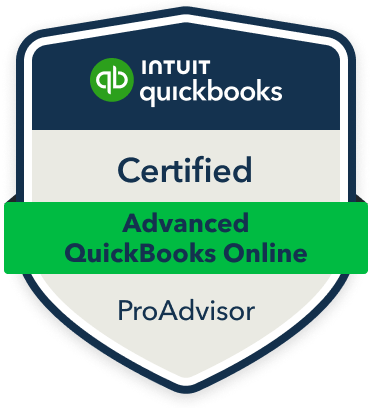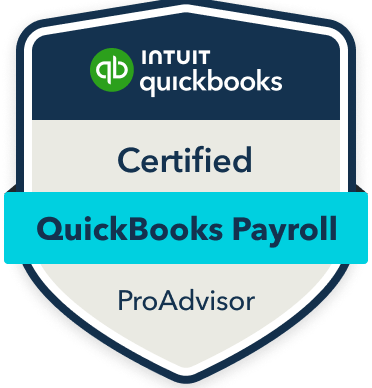Bookkeeping for E-commerce Businesses
Unlock essential bookkeeping insights tailored for e-commerce businesses. From managing multi-channel sales and tracking inventory to handling sales tax compliance and payment processing fees, this blog post covers key considerations that online retailers need to master. Learn how to optimize your financial management, automate tasks, and ensure accurate reporting to support the growth of your e-commerce business.


Bookkeeping for E-commerce Businesses: Key Considerations
The rapid growth of e-commerce has transformed the retail landscape, and with it, the way businesses manage their finances. Bookkeeping, an essential part of any business, requires a unique approach for online retailers. From managing sales platforms to understanding tax obligations across regions, e-commerce bookkeeping presents distinct challenges that differ from traditional retail.
In this blog post, we'll discuss key bookkeeping considerations that every e-commerce business owner should know to keep their financial operations smooth and compliant.
Managing Multiple Sales Channels
E-commerce businesses often operate on multiple platforms (e.g., Shopify, Amazon, Etsy). Keeping track of revenue streams from these different channels can be complex.
Reconciliation of Sales Data: Consolidating sales information from various platforms requires diligent reconciliation. Using software like QuickBooks, Xero, or integrated solutions can help automate and centralize the data.
Platform Fees and Payouts: Different platforms charge varying fees (transaction fees, shipping, advertising) and provide payouts at different times. It’s essential to account for these to ensure accurate profit reporting.
Key Tip:
Automate data collection using tools like A2X, which syncs sales and fee data directly from e-commerce platforms into accounting software.
Inventory Management and Cost of Goods Sold (COGS)
Inventory is one of the most significant costs for e-commerce businesses. Proper bookkeeping requires a system to track not only the quantity of products but also the cost associated with acquiring, storing, and shipping them.
Tracking Inventory: An accurate tracking system is vital for determining the Cost of Goods Sold (COGS), a key metric in understanding gross profit.
Valuation Methods: E-commerce businesses often use the First-In-First-Out (FIFO) or Average Cost Method for inventory valuation, impacting how COGS and profitability are calculated.
Key Tip:
Consider using inventory management software that integrates with your bookkeeping system to maintain real-time updates on stock levels and costs.
Sales Tax Compliance
E-commerce businesses face complex sales tax obligations due to selling across multiple states or even countries. The Wayfair Decision in the U.S., for instance, has introduced the concept of economic nexus, meaning businesses may need to collect sales tax in states where they exceed certain sales thresholds, even if they don’t have a physical presence there.
State and Local Tax Rules: E-commerce sellers must stay updated on different tax rules for each jurisdiction.
Tax Automation Tools: Solutions like Avalara or TaxJar can help automate sales tax collection, reporting, and filing.
Key Tip:
Consult with a tax professional to understand your obligations across different states or countries, and set up automated systems to avoid penalties.
Payment Gateway Fees and Foreign Currencies
Payment processing fees (PayPal, Stripe, credit card processors) and foreign exchange fees (if you sell internationally) can impact profit margins.
Payment Gateway Fees: These fees should be recorded as expenses. Since these platforms deduct the fees before depositing the funds into your account, keeping track of the gross sales amount vs. net payout is critical.
Currency Conversion: If your business accepts payments in different currencies, fluctuations in exchange rates can affect profits.
Key Tip:
Make sure to separate gross income from processing fees in your financial records for accurate accounting.
Returns and Refunds
Handling returns and refunds is a regular part of e-commerce. Properly accounting for these can be tricky but necessary for accurate revenue recognition and financial forecasting.
Revenue Adjustments: Ensure that returns are deducted from gross sales in the month they occur to avoid overstating revenue.
Restocking Fees and Shipping Costs: If your business charges restocking fees or incurs shipping costs for returns, these must also be properly accounted for in your books.
Key Tip:
Create a clear returns policy and incorporate it into your bookkeeping strategy to avoid cash flow surprises.
Shipping Costs and Fulfillment Fees
Shipping can be a significant expense for e-commerce businesses, whether you handle it in-house or outsource to fulfillment centers (e.g., Amazon FBA).
Tracking Shipping Costs: All shipping expenses, including materials, handling, and third-party logistics (3PL) fees, should be tracked separately to ensure they are accurately reflected in your COGS or expenses.
Shipping Income: If you charge customers for shipping, it should be recorded as revenue, and any discrepancies between charges and actual shipping costs should be accounted for.
Key Tip:
Review shipping costs regularly to see where you can optimize or pass along costs to customers.
Financial Reporting and Key Metrics
Accurate bookkeeping allows for effective financial reporting. E-commerce businesses should track specific metrics such as:
Gross Profit Margin (Revenue – COGS): Indicates the profitability of your products.
Net Profit Margin: Reveals overall profitability after all expenses.
Customer Acquisition Cost (CAC): Helps track how much you're spending to attract new customers.
Return on Ad Spend (ROAS): Useful for businesses running online ad campaigns.
Key Tip:
Regularly review these metrics to make informed decisions on pricing, inventory, and marketing.
Choosing the Right Bookkeeping Software
The choice of bookkeeping software can make or break an e-commerce business’s financial health. Software such as Xero, QuickBooks Online, or e-commerce-specific tools like A2X are popular among e-commerce business owners due to their integration capabilities.
Integration with Platforms: The software should easily sync with your e-commerce platforms like Amazon, Shopify, and WooCommerce.
Customization: Ensure the software allows for customizable reports, particularly for tracking your unique business metrics like inventory, sales tax, and profit margins.
Key Tip:
Look for software that offers seamless integration and automation, reducing manual data entry and potential errors.
Bookkeeping for e-commerce businesses is far more complex than traditional retail. With multiple sales platforms, inventory challenges, tax compliance, and a range of fees, it’s crucial to have a well-structured bookkeeping system in place. By leveraging the right tools, automating where possible, and staying on top of tax obligations, e-commerce business owners can ensure accurate financial reporting and maintain a healthy bottom line.








